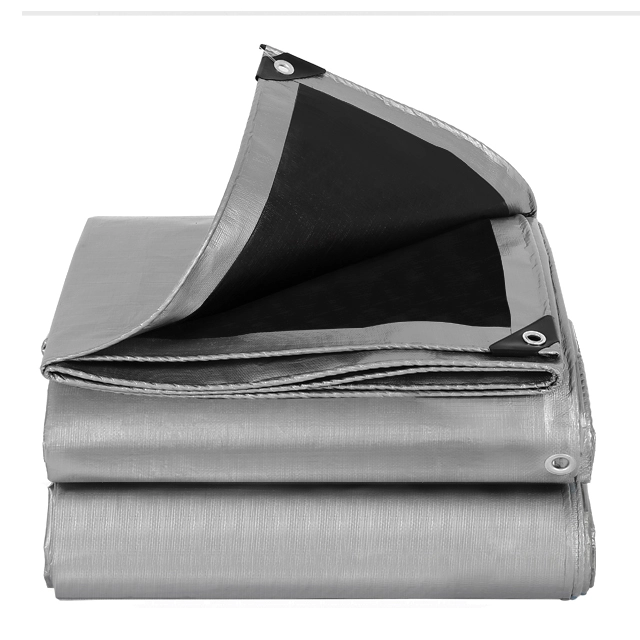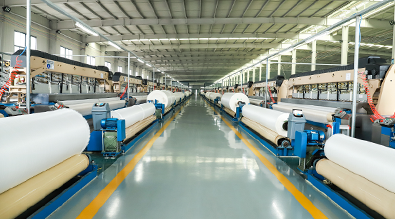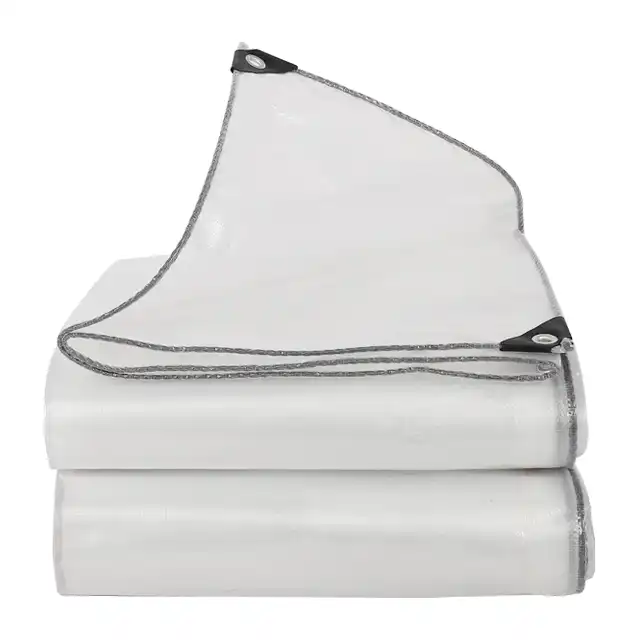Market Analysis of Awning Tarpaulins: What You Need to Know
Picture this: you've invested in quality outdoor furniture, created your dream patio space, only to watch it fade and deteriorate under harsh sun and unpredictable weather. Or perhaps you're a business owner watching your inventory suffer from weather exposure during storage and transport. This scenario plays out daily for countless property owners and businesses who underestimate the critical role of protective covering solutions. Understanding the awning tarp market dynamics isn't just about purchasing a product—it's about making informed decisions that protect your investments, reduce operational costs, and ensure long-term value in an increasingly competitive marketplace.
Understanding the Awning Tarp Market Landscape

The awning tarp market represents a critical segment within the broader protective covering industry, experiencing substantial growth driven by diverse applications across residential, commercial, and industrial sectors. The global tarpaulin market reached approximately 9.02 billion USD in 2023, with projections indicating continued expansion through 2032. Within this landscape, awning tarp solutions have emerged as essential products for sun protection, weather resistance, and aesthetic enhancement of outdoor spaces. The awning tarp market specifically addresses the growing consumer demand for durable, versatile, and cost-effective protective solutions that can withstand various environmental conditions while providing functional benefits. Modern awning tarp products incorporate advanced materials such as high-density polyethylene (HDPE) woven fabric combined with low-density polyethylene (LDPE) coating, offering superior waterproofing, UV resistance, and tear resistance. These technological advancements have positioned awning tarp solutions as indispensable tools for applications ranging from residential patio covers to commercial truck transportation, agricultural protection, and construction site coverage. The market's evolution reflects changing consumer preferences toward products that deliver both practical functionality and aesthetic appeal, while addressing environmental concerns through energy-efficient and sustainable manufacturing processes.
-
Key Market Drivers and Growth Factors
Multiple interconnected factors are propelling the awning tarp market forward, creating unprecedented opportunities for manufacturers, suppliers, and end-users. The construction industry's rapid expansion, particularly in developing economies, has generated substantial demand for protective covering solutions during building activities. Construction sites require reliable awning tarp products to protect materials, equipment, and work areas from weather elements, dust, and debris. Simultaneously, the agriculture sector's increasing mechanization and modernization have created substantial demand for awning tarp applications in crop protection, greenhouse coverage, and livestock shelter. The transportation and logistics industries represent another significant driver, with awning tarp solutions serving critical roles in cargo protection during loading, unloading, and transit operations. Additionally, the residential sector's growing emphasis on outdoor living spaces has stimulated demand for aesthetically pleasing awning tarp installations that provide shade, weather protection, and privacy enhancement. Environmental awareness and energy efficiency considerations further drive market growth, as consumers recognize that properly installed awning tarp systems can reduce solar heat gain by 65-77%, significantly lowering cooling costs and improving energy efficiency. The integration of smart technologies, including motorized retraction systems and weather sensors, has expanded the awning tarp market's appeal to tech-savvy consumers seeking convenient, automated solutions for their outdoor protection needs.
-
Material Innovation and Product Development Trends
The awning tarp market continues to evolve through significant material innovations and product development initiatives that address emerging consumer requirements and environmental considerations. Modern awning tarp manufacturing emphasizes the use of high-quality HDPE woven fabric, which provides exceptional strength, durability, and resistance to environmental degradation. These fabrics undergo sophisticated coating processes using LDPE materials that enhance waterproofing capabilities while maintaining flexibility and ease of handling. Weight specifications typically range from 65gsm to 280gsm, allowing customers to select appropriate thickness levels based on their specific application requirements. UV treatment represents a critical innovation area, with manufacturers incorporating 1-7% UV protective additives that extend product lifespan and maintain color integrity despite prolonged sun exposure. The development of ultra-wide width braiding machines has enabled the production of awning tarp products up to 5 meters wide without joints, eliminating weak points and enhancing overall product integrity. Fire prevention functionality has emerged as another important innovation, with specialized treatments enabling awning tarp products to meet stringent fire safety regulations in commercial and residential applications. Advanced waterproofing technologies ensure 100% water resistance, protecting covered materials and spaces from moisture damage. These innovations collectively position modern awning tarp products as sophisticated protective solutions capable of serving diverse applications while delivering superior performance characteristics compared to traditional covering materials.
Awning Tarp Market Segmentation and Applications
The awning tarp market demonstrates remarkable diversity through multiple segmentation categories that reflect the broad spectrum of applications and end-user requirements. Product segmentation includes fixed awning tarp installations designed for permanent protective coverage, as well as retractable and portable solutions offering flexibility and seasonal adaptability. End-user segmentation encompasses residential applications for patio covers, outdoor furniture protection, and pool area shading; commercial applications including restaurant outdoor dining spaces, retail storefronts, and event venues; and industrial applications such as warehouse coverage, construction site protection, and agricultural implementations. Geographic segmentation reveals distinct regional market characteristics, with Asia-Pacific regions, particularly China, emerging as leading production and consumption centers due to advanced manufacturing capabilities and cost-competitive positioning. North American and European markets demonstrate strong demand for premium awning tarp products featuring advanced technologies, superior aesthetics, and enhanced durability characteristics. Application-specific segmentation further differentiates the market, with specialized awning tarp products designed for truck covers, wood protection, goods storage, car canopies, sun shade installations, picnic applications, leisure tents, greenhouse fabrics, aquaculture implementations, and irrigation systems. This extensive application diversity underscores the awning tarp market's adaptability and relevance across numerous industries and use cases, creating opportunities for specialized product development and targeted marketing strategies.
-
Residential Awning Tarp Applications and Trends
The residential segment represents the largest and fastest-growing portion of the awning tarp market, driven by homeowners' increasing investment in outdoor living space enhancement and property value improvement. Residential awning tarp installations serve multiple purposes, including creating comfortable shaded areas for outdoor dining and entertainment, protecting outdoor furniture and equipment from weather damage, reducing interior cooling costs through solar heat gain prevention, and enhancing property aesthetic appeal through customizable color and design options. Market research indicates that approximately 86% of households in developed markets possess outdoor living spaces, with 66% actively purchasing furniture and accessories for these areas. This substantial consumer engagement creates consistent demand for quality awning tarp solutions that complement outdoor design aesthetics while delivering functional performance. Homeowners increasingly recognize that awning tarp installations can save up to 200 USD annually in energy costs by reducing air conditioning loads during warm months. The residential awning tarp market has evolved beyond purely functional products to include design-forward solutions available in diverse colors, patterns, and configurations that integrate seamlessly with home architectural styles. Patio awning tarp installations dominate residential applications, providing expansive coverage for outdoor entertainment areas while maintaining visual appeal. Window awning tarp products offer targeted sun protection that preserves interior furnishings from UV damage while maintaining natural light penetration. The growing trend toward customization enables homeowners to specify exact dimensions, color combinations, and feature sets that address their unique property characteristics and personal preferences.
-
Commercial and Industrial Awning Tarp Applications
Commercial and industrial sectors represent substantial growth opportunities within the awning tarp market, driven by practical needs for weather protection, brand visibility, and operational efficiency enhancement. Commercial establishments including restaurants, cafes, hotels, and retail stores utilize awning tarp installations to create attractive outdoor seating areas that extend usable space and enhance customer experiences. These installations serve dual purposes—providing functional weather protection while simultaneously serving as branding platforms through customizable colors, logos, and messaging. The hospitality industry particularly values awning tarp solutions for their ability to transform outdoor spaces into revenue-generating areas that operate comfortably regardless of weather conditions. Industrial applications encompass broad usage scenarios including construction site material protection, warehouse coverage for inventory exposed to elements, agricultural applications for crop and livestock protection, and transportation coverage for cargo securing during transit. Truck cover awning tarp products represent a specialized industrial segment, providing reliable protection for transported goods while meeting regulatory requirements for load securing. The construction industry relies heavily on awning tarp products for temporary weather protection during building phases, ensuring worker safety and material preservation in adverse conditions. Agricultural awning tarp applications include greenhouse coverage, aquaculture pond protection, and seasonal crop shielding from excessive sun, rain, or frost damage. Manufacturing facilities utilize awning tarp solutions for outdoor equipment protection and temporary workspace coverage during maintenance activities. The commercial and industrial awning tarp market prioritizes durability, tear resistance, and weather resilience, with products typically featuring heavier weight specifications (100-280gsm) and enhanced UV treatment to withstand demanding operational environments.
Regional Market Analysis and Competitive Dynamics
The awning tarp market exhibits distinct regional characteristics influenced by economic development levels, climate conditions, manufacturing capabilities, and consumer preferences. Asia-Pacific regions, particularly China, dominate global production and consumption, leveraging advanced manufacturing infrastructure, skilled labor availability, and cost-competitive positioning. Chinese manufacturers have developed sophisticated production capabilities including 30+ units of high-tech extruding machines, 400+ units of Korea-imported automatic water-jet looms, and specialized coating facilities capable of processing fabrics up to 5 meters wide. These technological investments enable consistent quality production with daily output capacities exceeding 100 tons of finished awning tarp products. North American markets demonstrate strong demand growth driven by residential outdoor living space expansion and commercial sector investments in customer experience enhancement. The United States particularly exhibits robust market activity, with growing consumer preference for motorized and sensor-equipped awning tarp systems that integrate with smart home technologies. European markets emphasize premium quality, sustainability, and aesthetic design, with consumers willing to invest in higher-priced awning tarp solutions offering superior durability and environmental credentials. Middle Eastern and African markets represent emerging opportunities, driven by construction sector growth, agricultural development initiatives, and increasing consumer purchasing power. Latin American regions show steady growth patterns supported by urbanization trends and expanding commercial sectors. Regional market dynamics also reflect climate-specific requirements, with tropical regions prioritizing UV resistance and waterproofing characteristics, while temperate zones emphasize seasonal flexibility through retractable awning tarp systems.
-
Competitive Landscape and Market Positioning
The awning tarp market features a competitive landscape characterized by both large-scale manufacturers with comprehensive production capabilities and specialized suppliers focusing on niche applications or regional markets. Leading enterprises distinguish themselves through quality assurance systems, technological innovation, production capacity, and established customer relationships. Quality management represents a critical competitive differentiator, with top manufacturers implementing ISO 9001:2015 certified processes and comprehensive quality monitoring systems covering every production stage. Advanced quality testing equipment ensures consistent product specifications, while third-party laboratory testing provides independent verification of performance claims. Research and development capabilities enable competitive advantage through innovative product features including fire prevention treatments, enhanced waterproofing technologies, and ultra-wide width fabric production without joints. Manufacturing capacity and efficiency directly impact competitive positioning, with larger producers leveraging economies of scale to offer competitive pricing while maintaining quality standards. Strategic partnerships with international organizations including UNHCR, IOM, ICRC, and UNICEF provide credibility and market access for humanitarian and development applications. Export capabilities and international market presence enable manufacturers to serve diverse geographic markets and distribute risk across multiple regions. Brand recognition and reputation, built through consistent quality delivery and customer service excellence, create sustainable competitive advantages that translate into customer loyalty and repeat business. Price competitiveness remains important, particularly in price-sensitive market segments, though successful competitors balance cost efficiency with quality maintenance to avoid commoditization and margin erosion.
Quality Standards and Performance Specifications
Quality considerations fundamentally impact awning tarp market dynamics, influencing purchasing decisions, product longevity, and customer satisfaction. Professional awning tarp products incorporate multiple quality dimensions including material strength, waterproofing effectiveness, UV resistance, tear resistance, dimensional stability, and aesthetic durability. Material specifications begin with high-quality HDPE woven fabric featuring appropriate mesh counts (typically 10x10 to 14x14) that balance strength with flexibility and weight efficiency. The coating process applies LDPE layers to both fabric sides, creating complete waterproofing while maintaining breathability that prevents moisture accumulation and mildew development. Thickness specifications ranging from 7 to 12 mil ensure adequate protection for intended applications, with heavier specifications serving demanding industrial uses and lighter weights appropriate for residential implementations. UV treatment levels between 1-7% protect against harmful solar radiation that causes material degradation, color fading, and performance deterioration over time. Proper UV treatment can extend awning tarp lifespan by multiple years, representing significant value for end-users. Tear resistance testing verifies product ability to withstand physical stress from wind loads, installation tensions, and accidental impacts without catastrophic failure. Waterproofing performance must achieve 100% effectiveness to prevent moisture penetration that compromises protection objectives and accelerates material degradation. Temperature resistance including anti-freezing capabilities and arctic flexibility ensures product functionality across diverse climate conditions from extreme cold to intense heat. Additional quality features include anti-corrosion properties that prevent chemical degradation, shrink-proof treatments that maintain dimensional accuracy, and easy handling characteristics that simplify installation and maintenance procedures.
-
Customization and Product Specification Capabilities
The awning tarp market increasingly emphasizes customization capabilities that enable products to meet specific customer requirements rather than forcing users to adapt to standardized offerings. Professional manufacturers maintain flexible production systems capable of accommodating custom specifications across multiple dimensions including size requirements, color preferences, weight specifications, feature combinations, and application-specific modifications. Size customization represents fundamental flexibility, with advanced manufacturing equipment producing awning tarp products from compact dimensions suitable for residential window coverage to ultra-wide formats exceeding 5 meters for commercial and industrial applications. Custom width capabilities eliminate the need for joints and seams that create weak points vulnerable to failure under stress. Color customization enables brand alignment for commercial users and aesthetic coordination for residential applications, with professional suppliers offering extensive color palettes including standard options and custom color matching services. Weight specification customization allows customers to optimize the strength-to-weight ratio for their specific application, with lighter weights reducing handling challenges and costs while heavier specifications provide enhanced durability for demanding environments. Feature customization includes options for specialized treatments such as enhanced fire resistance, extreme UV protection levels, anti-static properties, and anti-fungal agents addressing specific application requirements. Logo printing and branding services enable commercial customers to transform functional awning tarp products into marketing tools that reinforce brand identity and messaging. This customization emphasis reflects market evolution from commodity products toward specialized solutions that deliver precise performance characteristics aligned with customer needs and preferences.
Conclusion
The awning tarp market presents significant opportunities driven by diverse applications, technological innovations, and growing consumer recognition of protective covering value. Successful market participation requires understanding quality standards, application requirements, and regional dynamics while partnering with reliable manufacturers offering comprehensive capabilities and consistent performance.
Cooperate with Linyi Shengde Plastic Co., Ltd.
As a China awning tarp factory, China awning tarp supplier, and China awning tarp manufacturer with over 20 years of expertise, Linyi Shengde Plastic Co., Ltd. stands as your trusted partner for High Quality awning tarp solutions. Our China awning tarp wholesale capabilities include comprehensive customization, ISO 9001:2015 certified quality management, and proven partnerships with international organizations including UNHCR, IOM, ICRC, and UNICEF. We deliver awning tarp for sale with competitive awning tarp price structures backed by advanced production facilities featuring 400+ automatic water-jet looms, specialized coating machines, and 100+ tons daily output capacity. Whether you require truck covers, construction protection, agricultural applications, or specialized implementations, our research and development team provides depth product customization meeting your flexible demands. Our export experience spans 30+ countries including Spain, USA, Canada, Mexico, Brazil, India, Bangladesh, Saudi Arabia, Ethiopia, and Kenya. Contact us today at info@shengdetarp.com to discuss your specific requirements and experience reliable quality, fair prices, prompt delivery, and exceptional service. Save this information for future reference and reach out whenever you need trusted awning tarp solutions.
References
1. Professional Awning Manufacturers Association. "Energy Efficiency Benefits of Awning and Shade Structures." Industry Research Report on Residential Energy Conservation.
2. International Casual Furnishings Association. "Consumer Trends in Outdoor Living Spaces and Furniture Purchasing Patterns." Annual Industry Survey and Market Analysis.
3. Business Research Insights. "Global Tarpaulin Market Analysis: Growth Drivers, Segmentation, and Regional Dynamics." Tarpaulin Industry Research Report 2023-2032.
4. Grand View Research. "Retractable Awnings Market Analysis: Consumer Preferences, Technological Innovations, and Market Projections." Industry Analysis Report 2018-2025.




